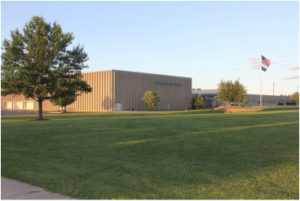On 4 December, this year, I was emailed by John Pratt, English teacher at Greensburg High School in Indiana, asking if I would read for his program (virtually), and send a shout out to the students. Greensburg has experienced two waves of COVID and was forced to return to all-online classes; the readings would be an end-of-year bonus for students. I also see it as an effort to communicate between “regions” of the pandemic: Indiana, a red state with huge uptick in cases in December, and Michigan, a blue state where a similar surge was somewhat damped but still compares with other Midwestern states, as I know from the Michigan Coronavirus page [here].
With a population of 11,000, our small town of Greensburg Indiana was hit hard by the pandemic in March and last week it returned with full force. Once again Greensburg High School has been moved to virtual learning. As one of our teachers, I have launched a campaign to provide an inspiring lesson for our over 700 students. It is called The Bucket List—Our Greatest Poets. I have sought out those who I feel would inspire us with a few words. Would you be willing to read a poem for my students? Simply tape yourself saying who you are, give a shout out to Greensburg High School students, then read a poem. Thank you for your consideration and have a great week.
No problem, you bet. On 14 December, I recorded a section from my poem of the COVID duration, “Notzeit (After Hannah Höch),” with a short exhortation to the students to write about what they have learned from strange times:
John Pratt, in turn, posted the video to his Virtual Chautauqua page [here], which provides links to the fifteen poets who responded; I was pleased to see myself in company with Eileen Myles, Martín Espada, and other poets new to me. The readings are marvelous, unified by the prospect of speaking to youth across time zones, and worth the time clicking through.
The section I read from “Notzeit,” number 18, obeys a dream logic of inexorable sequence as it maps an experience of being tear-gassed at Berkeley in 1969 (which I write about in Questions of Poetics) with the COVID duration. If only we could replay the tape, or the dream, backwards—we would exit the gymnasium with the basketball game in process, back up through Lower Sproul Plaza, where no such toxic “gift” of gas ever occurred, and bypass the National Guard with fixed bayonets ringing the campus. And where or who would we be now if such a thing had never happened? Such would be the mapping of the dream onto the pandemic. The details of classes, assignments, and the basketball game must have predicted my reading in Indiana, and my understanding of the cultural logic of the pandemic (the Wayne County sheriffs who succumbed after partying at Bert’s in Detroit) would be clarified had I only read the the classics of anthropology (which indeed I had). Such are the resonances of the moment, detourning all logics of sequence in a univocal, multi-voiced, nonnarrative present that continues.
Links to 2020 virtual readings
Harryman, Carla. Enclave reading. Produced by Chax Press. 11 October 2020. YouTube.
———. Philosopher au present. “Après Trump,” part 6. Ed. Jérôme Lèbre. YouTube.Watten, Barrett. From “Plan B.” Philosopher au present. “Après Trump,” part 6. Ed. Jérôme Lèbre. YouTube.
———. From “Notzeit (After Hannah Höch).” Section 18. Chant de la sirène. Ed. Laura Hinton. Introduction by Adeena Karasick. YouTube. 38:06–47:40.
———. From “Notzeit (After Hannah Höch).” Section 19. Poets Corner (Virtual Chautaqua, Greensburg [Ind.] High School). Ed. John Pratt. YouTube.













